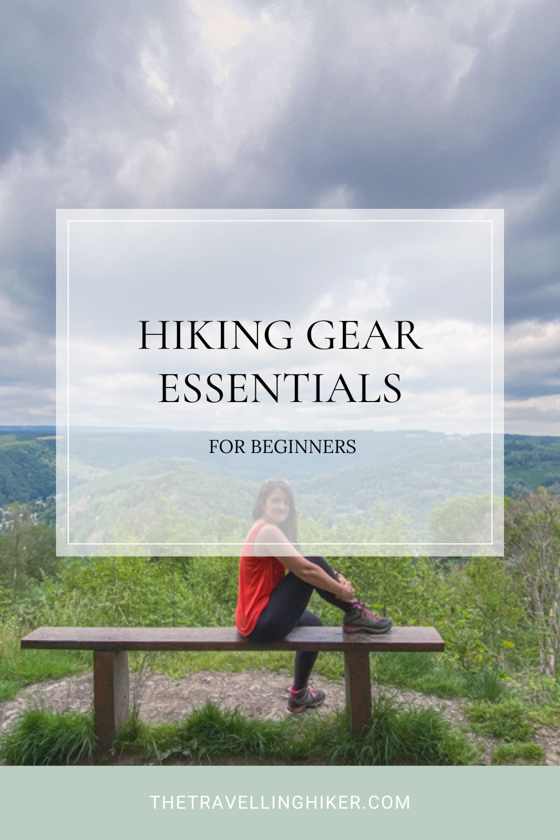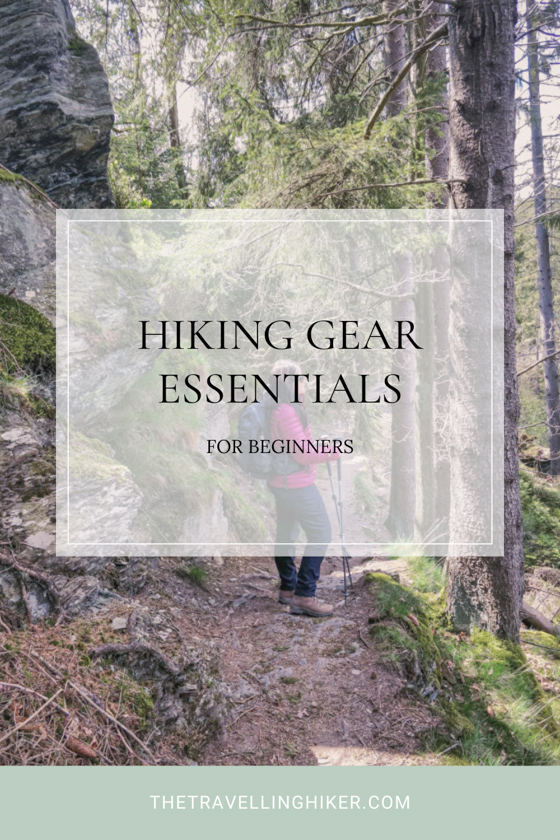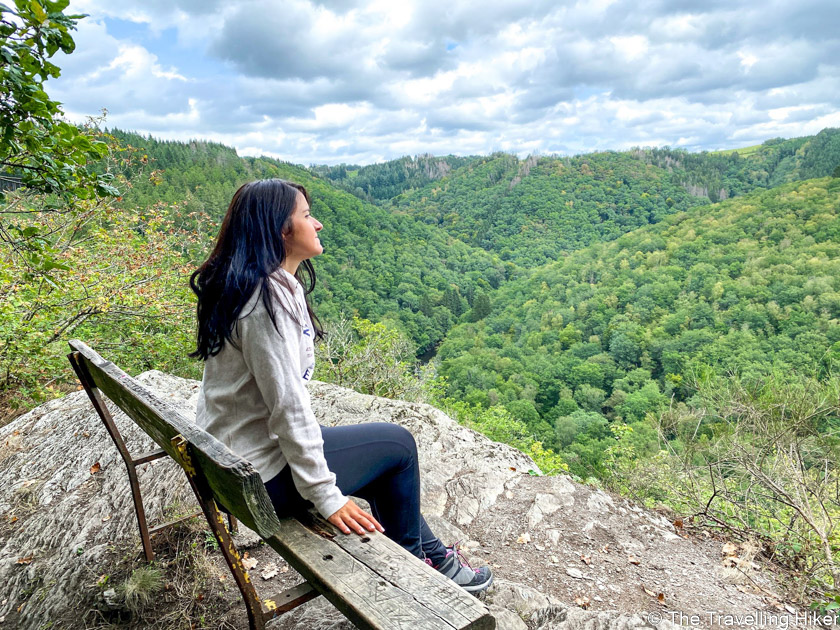As a beginner hiker, knowing which equipment you need can be a bit confusing. There are so many things that you can buy and so many brands and options to choose from, that you might not know where to start. In this article, I will share my hiking gear essentials for beginners.
All of these are based on my personal experience as a hiker and some of them I have figured out the hard way. So hopefully, with this guide, I will help you not to make the same mistakes as I did.
Please keep in mind that you don’t need to have all of these to be able to start hiking. I recommend you start with the basics like shoes and shocks and slowly invest in the rest as you go on more hikes.
clothing
Wearing the appropriate clothing while hiking is a must. Weather conditions can be unpredictable and even though some of these might seem unnecessary, you may need them at one point or another.
1. Hiking Shoes
Investing in appropriate hiking shoes is the most important thing you should do. Hiking trails can be unstable and rocky so having good shoes to protect your feet is important.
Hiking shoes are not cheap but I recommend investing in a good pair. Your feet are really important. After all, they are the ones that take you places. Trust me, I learned this the hard way. I didn´t want to spend a lot of money on hiking shoes so I bought myself cheaper ones but they were not appropriate for my feet. As a consequence, I lost one toenail, that took over a year to grow back again. And in the end, I had to invest in good hiking shoes so I ended up paying twice…
Hiking Boots or Shoes?
Another thing you should consider is the kind of shoe you want to buy. You can either get hiking boots or hiking shoes they both have pros and cons so it is a matter of finding what you’re most comfortable with.
- Hiking boots: They offer more protection to your feet and support for your ankles. However, they can be very warm in the summer and they are heavier.
- Hiking shoes: They are lighter and less warm ideal for hiking in summer. However, they don’t support your ankle so you have to be careful not to twist it. If you are hiking in a rocky area, I would go for hiking boots even if it is summer.
If you doubt which shoes to buy, I suggest you ask for advice in the shop. Usually, people working in specialized hiking shops are passionate hikers as well, so they will be able to guide you and give you recommendations.
The hiking shoes I have now are:
- For colder weather: Meindl Vakuum Lady Ultra GTX
- For warmer weather: Altra Lone Peak 6
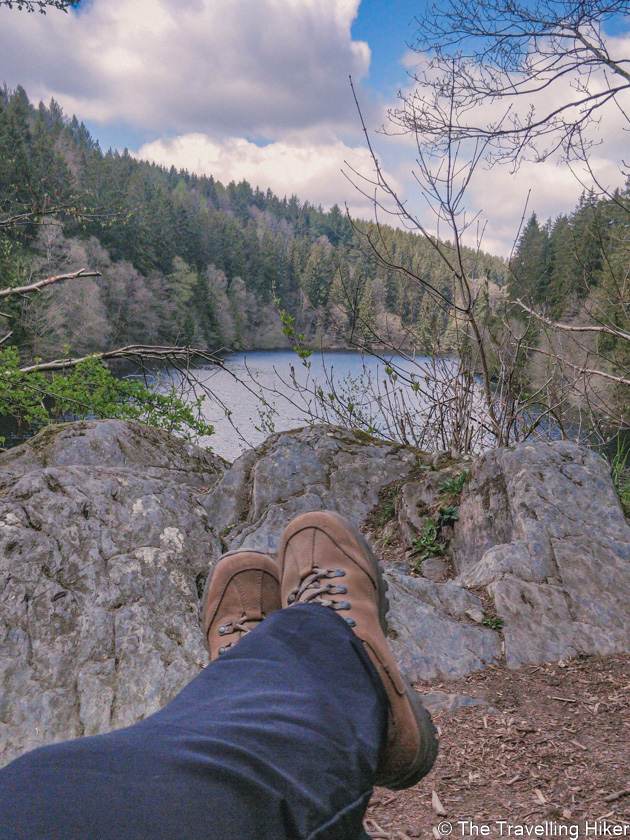
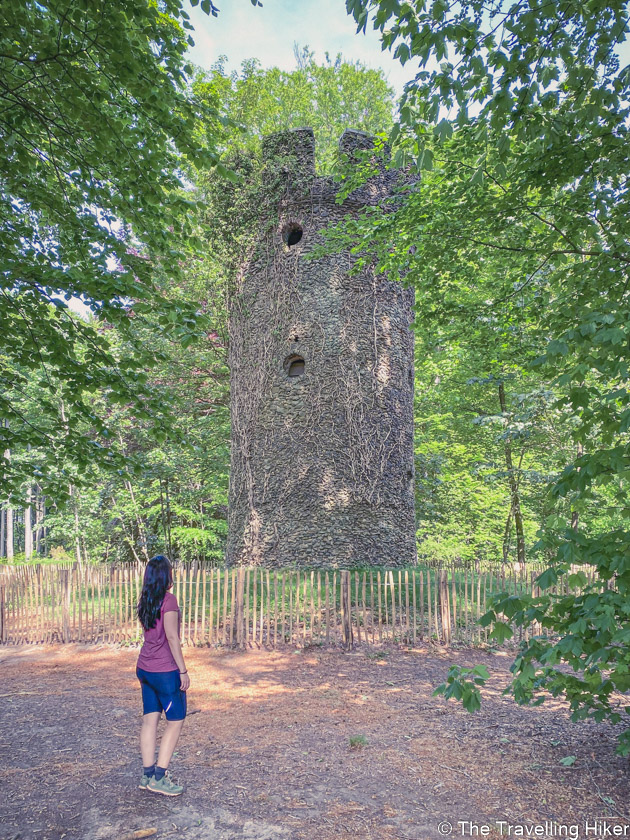
2. Hiking Socks
Continuing with the theme of protecting your feet, another must you should have is hiking socks. You can either get merino wool or synthetic socks. My preference is merino wool socks but this is really up to you. Here are the characteristics of both so that you can decide.
- Synthetic socks are cheaper, lighter, more durable and they dry quicker.
- Merino wool socks are more comfortable to touch, have better odor control, and are naturally wicking.
Another important thing to consider when getting your hiking socks is that they are long enough to protect your ankles and legs from friction and stinging plants (even during warm summer months). During my hiking trip in Croatia, I decided to wear shorter running socks because it was really warm. As a result, because of the sweat, the friction, and plants, I got some allergic reactions and my ankle area was red and inflated for a week.
One last recommendation is to always have a spare pair of socks in your backpack. Your feet might get wet and nothing beats having dry feet.
3. Hiking Pants or Leggings
Another thing you should consider investing in is hiking pants or leggings. Yes, it is possible to hike with regular leggings that you wear to the gym. I too have done it several times. However, specific hiking pants or leggings can be very convenient as they are usually more breathable, and water and wind-resistant. In addition, they usually have one or multiple zipped pockets to help you safely store things.
I prefer hiking with leggings but I do own a pair of hiking pants too. I find leggings more comfortable to move around in and it is also easier for me to find leggings that fit me properly. If like me, you struggle to find hiking pants that fit both your hips and waist properly, I recommend the ones I have: Sprayway Women’s Warm Escape Slim Pant
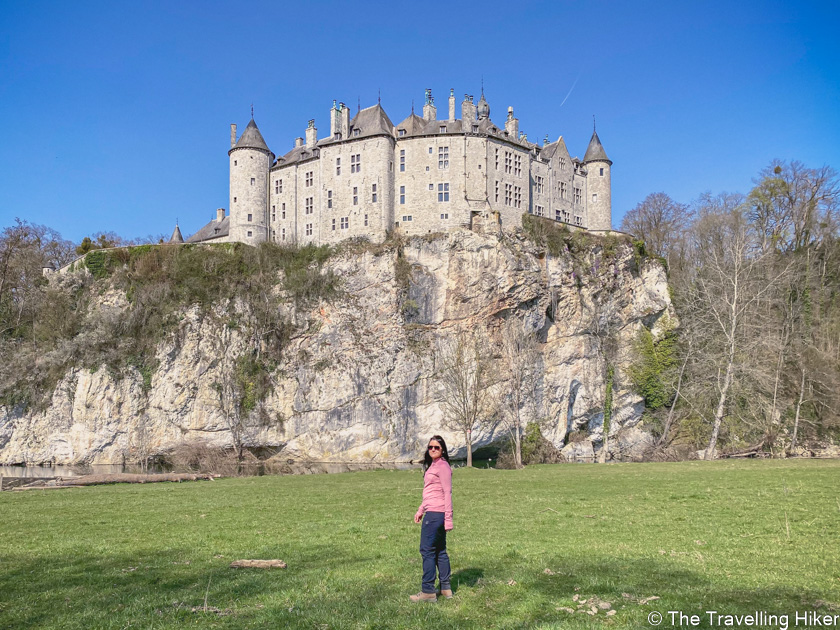
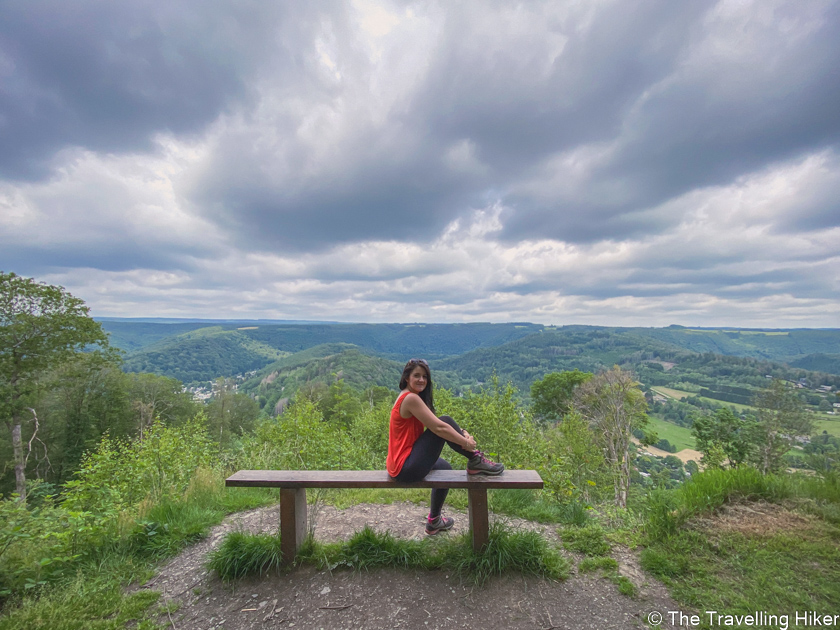
4. Fast Drying T-shirt
Having a fast-drying T-Shirt is another must. No matter the time of the year, hiking is a physical activity so the chances that you will sweat are high. Due to this, having a t-shirt that dries fast and doesn’t stay wet will be very convenient. Nothing is more uncomfortable than having a wet t-shirt that makes you cold during the winter or is wet and sticky during a warm hike.
There a plenty of options available in all stores that can adapt for all budgets and tastes. Just look around and get the one you like the most!
5. Warm Fleece
It is very common to start hikes early in the morning. Other times, even if it is summer, the temperature difference at a mountain peak is considerably lower than at the trailhead. In these cases, you will be really thankful to have a warm fleece in your backpack.
Same as for the t-shirts there are plenty of options depending on your budget and style!

6. Rain Jacket
When in nature, you never know when it is going to rain. The day might start sunny but it can suddenly turn into a rainy day. If you want to be prepared for these situations, carrying a light rain jacket with you is a good idea. In addition, most rain jackets are also wind-resistant, so it’s a win-win situation.
My rain jacket is from The North Face.
7. Down Jacket
A light down jacket will become very useful for hiking in colder weather. You can choose between natural down or synthetic down.
- A natural down jacket is lighter and warmer. However, if it gets wet it loses insulation properties and it needs much care for cleaning.
- A synthetic down jacket is water-resistant and continues to insulate when it gets warm. It is also cheaper than a natural one. On the other side, it is heavier and it is less durable.
My down jacket is from Karpos but the model is no longer available.
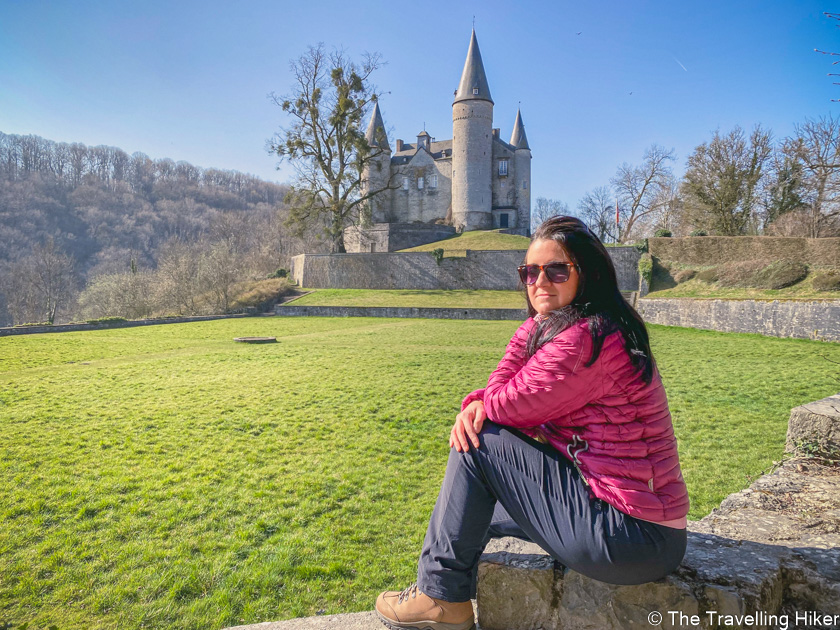
8. Rain Pants
These are not absolutely necessary. However, they can be very handy if heavy rain is expected. Personally, I only bought my rain pants for my trip to Iceland since there, you can get really wet near the waterfalls.
My rain pants are these ones from Decathlon.
9. Thermal Underwear
Thermal underwear will only be necessary if you are planning on hiking during the winter or in really cold weather. I only bought them for my trip to Iceland, where having layers is key!
accesories
When it comes to hiking accessories, not everything that I will list is absolutely necessary. However, all of them will make your hike more comfortable.
1. Backpack
A good backpack is another essential when hiking. You will need it to carry water, snacks, and everything that you will need during your hike.
Of course, a regular backpack is also acceptable. However, for longer hikes or if you are going to be carrying a lot of heavy things a specific hiking one with good back support will be useful. Even if you are not carrying a lot of things, during a hike your backpack will feel heavy so having an extra comfortable one is something to look for.
For a one-day hike, a 20-22L backpack is in my opinion a good enough volume. My backpack is the Osprey Talon 22.
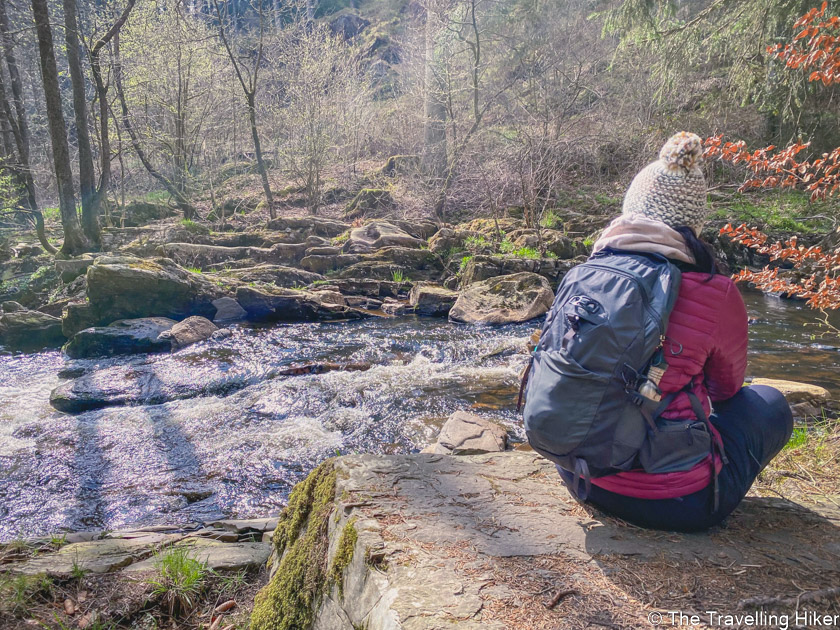
2. Hat
Another important accessory for your hikes is a hat. In the summer it is convenient to have a cap that will protect you from the sun and in the winter, you will appreciate having a warm hat.
3. Reusable Water Bottle
Hydration is key during a hike! Having 1 or 2 water bottles with you during a hike is non-negotiable. You can complement them with a water filter, in case you run out of water and you need to get water from a river.
Here are the links to my water bottles and water filter:
4. GPS/Navigation
These days it is easy to use your smartphone as GPS. However, extreme weather or excessive use can make your phone battery die sooner than expected so having a GPS different than your phone is another thing to consider.
5. Hiking Poles
Having a pair o hiking poles is not essential for hiking but they can be very handy on long and steep hikes.
Here are the poles I have: Black Diamond Trail Trekking Poles.
6. Headlight
If you are planning to start your hike before sunrise or return after sunset, you definitely need some sort of torchlight. For hiking, a headlight is the most convenient thing to have as you will see where you are going while having your hands free.
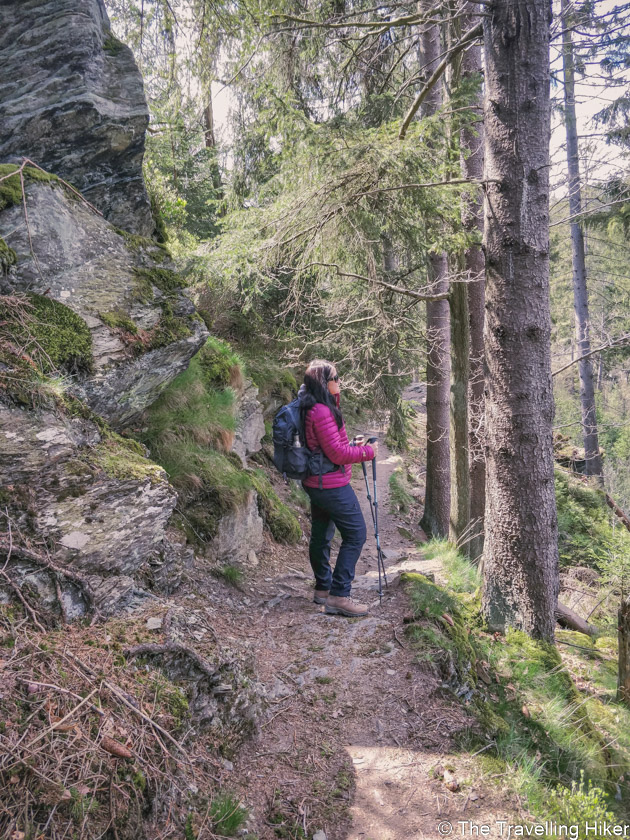
7. First Aid Kit
Accidents can happen at any time and anywhere. Having a small first-aid kit can literally be a life-saving thing to have with you. What you put in it, will vary depending on your necessities but it should at least contain:
- Bandages for blisters and cuts.
- Some betadine or any other kind of disinfectant.
- Pain killers and anti-inflammatory tablets.
8. Lightweight towel
If your feet get wet by accident or if you decide to get them in a river to refresh them, you will be grateful to have with you an ultralight towel. I have the Airlite Towel from SeatoSummit which weighs nothing and is smaller than my palm.
9. Snacks, Sunscreen, Knife, Firestarter, etc
To end up, you might consider taking with you some extra things like:
- Snacks in case you are hungry or need some extra energy
- Sunscreen to protect your skin
- A multi-purpose knife
- A small fire starting kit
Save it for later!
